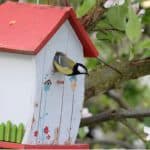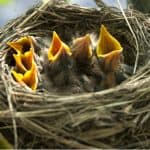Last updated on March 16th, 2022
Our site is reader supported, this means we may earn a small commission from Amazon and other affiliates when you buy through links on our site.
Everyone loves birds. But, why are there no birds in my garden, you might ask? Well, chances are the environment you have is not currently sustainable for the birds.
That being said, you can learn how to attract birds quickly so that your garden can become filled with the joyful flapping of wings from your feathery friends.
Birds will make it a point to come to your garden as long as there is ample food available, so in order for you to rectify the issue of having no birds in your garden, you need to set up feeders first and foremost. Once you have feeders available, it’s time to provide natural food for the birds as well as some cover and some nesting areas. No matter how small your garden might be or how close in proximity to a city you can still make your garden bird-friendly.
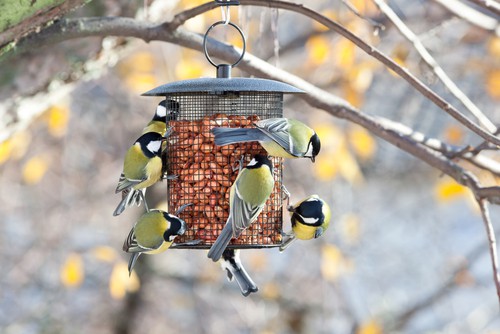
Gives birds what they need and they will come
There are some birds that prefer mature trees and others that live happily amongst the city. The goal of having birds in your garden all year round is to ensure that you give the birds what they need to survive. You have to accommodate the requirements your local birds have throughout the season. Planting bushes that are overrun with berries in the summer and autumn (such as Cotoneasters and Pyracantha) is a great starting point, however, soon enough these birds might strip your shrubs of any berries and then go searching for food elsewhere.
One issue with introducing bird feed is you can get a lot of pigeons that eat everything, check out my review of the best pigeon-proof bird feeders to help combat this.
Birds often feed on insects and aphids that live on your plants in summer
When your trees and shrubs no longer produce berries and food for the local birds, consider supplementing the food supply with other foods. Again, during the summer you might have a garden that is overrun with an insect population perfect for the sparrows in your area but once summer ends, so will your flying friends.
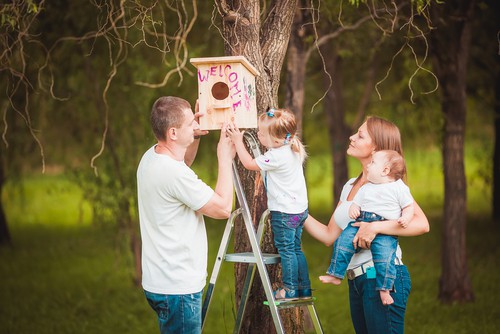
Beyond food, you have to consider giving them protection and space to nest. You can entice different birds with nest boxes and densely covered areas throughout the rest of the year, which means planting lots of shrubs to provide cover.
You have to understand that each of these measures you take is going to require a few years before the birds remain highly populated in your garden. It takes a while for birds to figure out that your garden gives them all of the accommodation they need and then to spread the word thusly.
Give Them the Right Food
When it comes to providing food make sure you are only purchasing bird food from reputable sources. This will make sure the seeds you give the local birds have enough energy. You might have to try different feeders and different mixtures of seeds. Goldfinches prefer seeds that are different from Greenfinches so of course, you’ll have to be mindful of what birds are natural to your area, and what birds you want to supply with food. Changing the type of bird seed in your feeders can make all the difference.
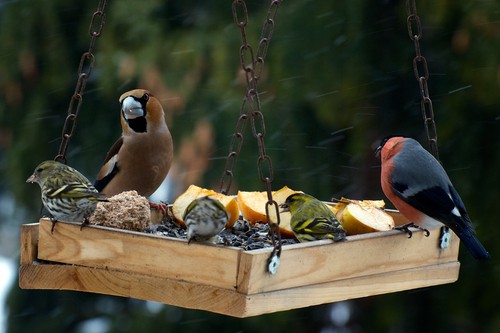
Choose the right bird feed for the type of birds in your garden
Don’t purchase multi-purpose food for all birds and don’t just toss out pieces of bread. These are empty fillers and no good for the birds. Be mindful of bird-specific foods and food that is specific to the type of bird.
Give Them a Birdbath
In order to keep the birds near your garden, give them someplace to bathe. Install a birdbath so that your birds don’t have to leave the scene in order to complete their daily routine. Water is not only necessary for them to drink and wash down their food after they’ve consumed the seeds you have so thoughtfully provided, but they need a place where they can bathe and cool down in the summer weather. Make sure this birdbath doesn’t freeze in the winter and never use salt to defrost it because if you do this will swiftly kill the birds you are trying so hard to attract.
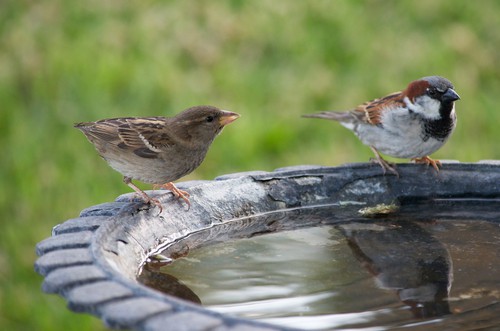
Give them protection and cover to make them feel safe
Your goal should be to make the birds feel comfortable and safe in your garden and to do that you want to place the feeders in protected areas so that predators don’t see the birds and scare them off. Place the feeders away from the outside of your home so that they don’t accidentally fly into doors and windows whilst trying to eat.
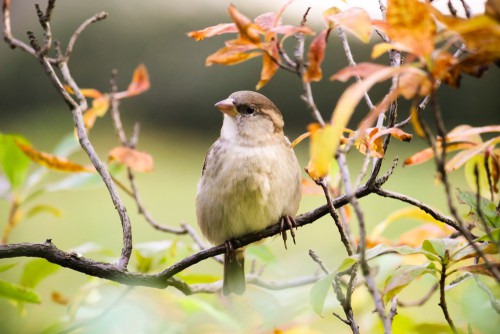
Consider planting a hedge instead of installing a fence
If you provide a lot of hedges with a very dense cover you will no doubt find that birds soon make a home for themselves naturally, with this in mind consider planting a hedge instead of fences. This also helps other wildlife such as hedgehogs. Good hedging plants for birds include hawthorn, blackthorn and even conifers. It’s a great idea to put up nest boxes for birds but it’s equally as rewarding to watch the birds building their own homes.
Consider planting berry and fruit bearing trees
As mentioned, if you plant any fruit-bearing trees or berry-producing trees, in particular, they will bring a lot of birds to your garden for shelter, nesting and food. So if you start to incorporate more of these plants, even those that can only be consumed by birds, you will soon begin to notice more friendly fliers in your garden.
Other Tips to Attract Birds into your Garden
A few other tips include keeping cats away. If you have a problem with cats, use some form of deterrent to keep them away from the seating areas. You can also place your bird feeders away from any type of low cover where cats might sit and wait to sneak up on the birds.
We have reviewed some of the best cat repellers where we compared a range of methods, from sonic repellers to spikes for placing on fencing that doesn’t harm cats but is uncomfortable for them to walk on. Read our cat repellent reviews here.
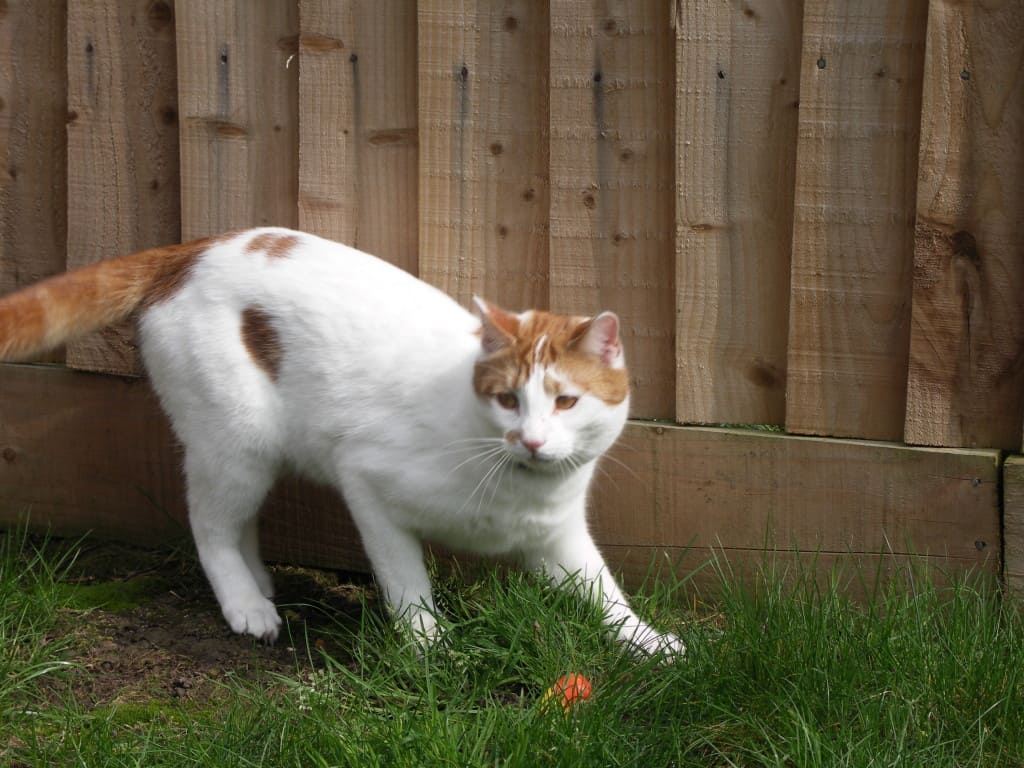
Try changing the location of nest boxes if the birds don’t use them
If you have nest boxes you need to change their location periodically. You might find that a currently unoccupied nest box quickly becomes occupied when you move it to a different part of your garden. Also, clean your nest boxes every winter. Get rid of any old nests and use hot water to kill any parasites. Then securely reattach them.
Keep the feeders clean and the food fresh
You should also remove any mouldy food from the feeders and sterilise them regularly to prevent diseases from spreading. If you see that birds are somewhat lethargic in your garden, or they have fluffed up feathers indicative of sickness, clean and sterilise the feeders more often.
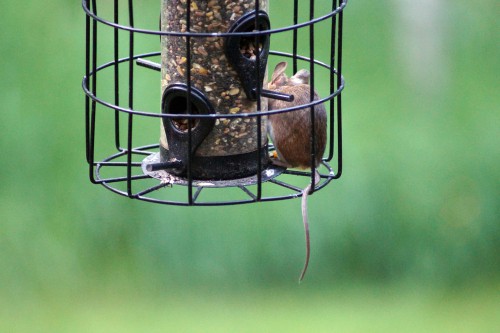
If you are able to, adjust the amount of food you provide based on the demand. If you just leave too much food in a feeder it will attract unwanted rodents such as mice and rats. By providing food as demanded all year round you can give the birds in your area of a better chance of survival. This is particularly important if you start an annual routine because birds quickly become accustomed to your food supply and rely upon it, you don’t want to forget about them.
Choose your food wisely. The type of food you provide will dictate the type of bird you attract. Great Spotted Woodpeckers, for example, love peanuts but don’t put them out in the spring because the size of the peanuts will choke the younger birds. Robins, Goldfinches, and Siskins love niger seeds, but you will need a special feeder to accommodate its small size. If you put out sunflower hearts, watch out because house sparrows, siskins, robins, and all garden finches will come flapping at your door. Mealworms will bring blackbirds, blue tits and song thrushes, especially in spring.
Image credits – Shutterstock.com

